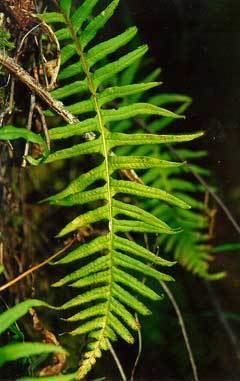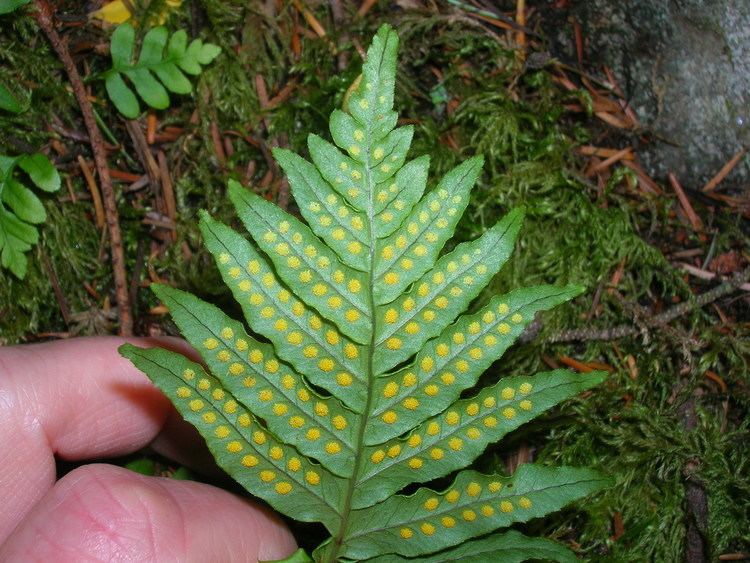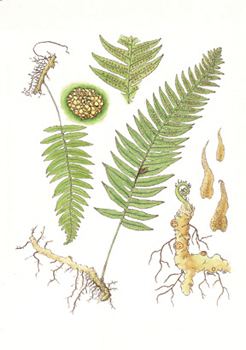Rank Species | Division Pteridophyta Scientific name Polypodium glycyrrhiza | |
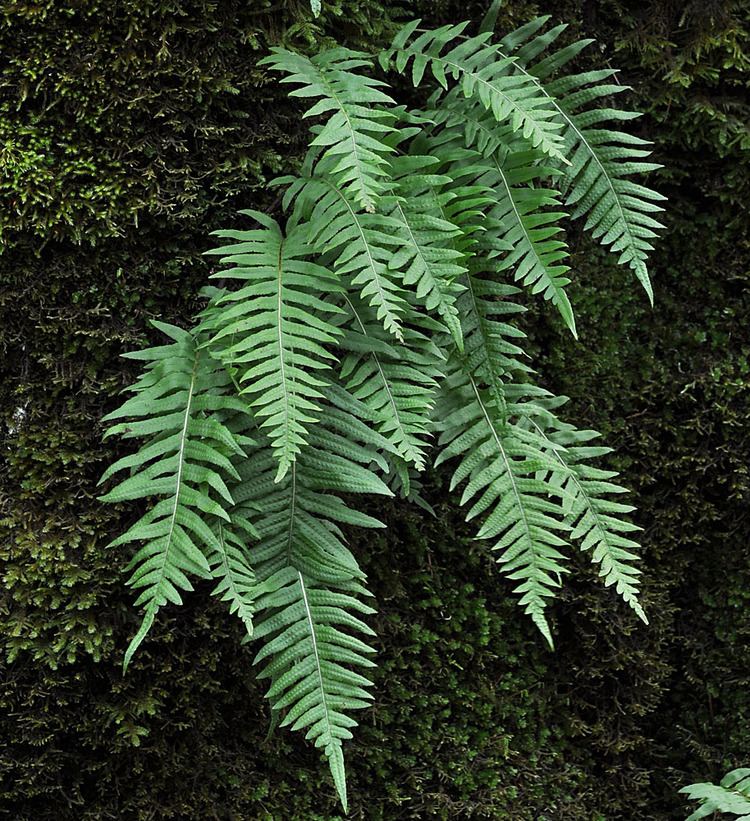 | ||
Class Polypodiopsida/Pteridopsida (disputed) Similar Polypodium, Polystichum munitum, Polypodium scouleri, Polypodium hesperium, Polypodium californicum | ||
Licorice fern polypodium glycyrrhiza dorris ranch springfield oregon
Polypodium glycyrrhiza, commonly known as licorice fern, many-footed fern, and sweet root, is an evergreen fern native to western North America, primarily in a narrow strip in southern Alaska, southwestern Yukon Territory, western British Columbia, Washington, Oregon, and California, though two highly disjunct populations are known from Idaho and Arizona. It thrives in a humid climate, prevailing in areas with cool and moist summers and warm and wet winters. P. glycyrrhiza can often be found growing on the trunks and branches of deciduous trees, particularly bigleaf maple, but is also often found on rocks, logs, and wet, mossy humus. Habitat elevation is lowlands below 600 meters.
Contents
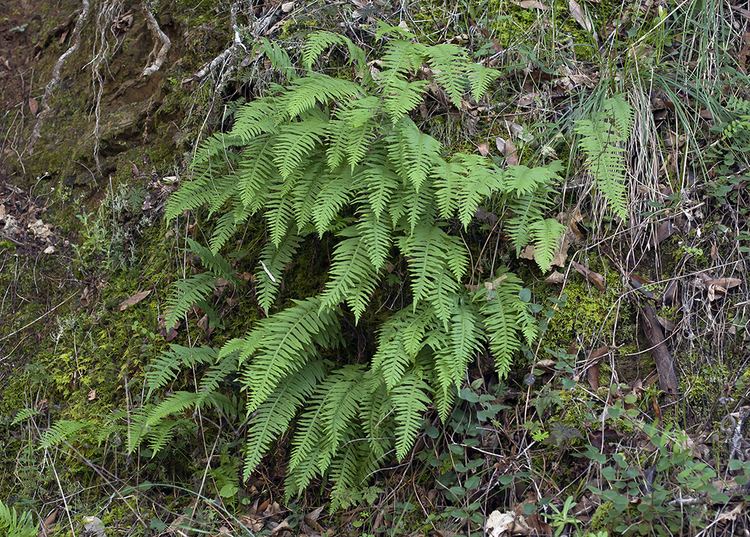
Licorice fern acquires its name from its licorice-flavored rhizome, which was chewed for flavor by numerous Native American groups, including the Squamish, Shishalh, Comox, Nuxalk, Haida, and Kwakwaka'wakw. The rhizomes were also usually used medicinally as a treatment for the cold and sore throats.
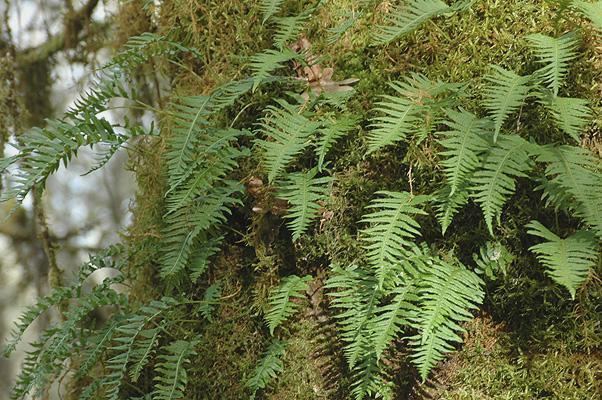
Spores are located in rounded sori on the undersides of the fronds, and are released in cool weather and high humidity.
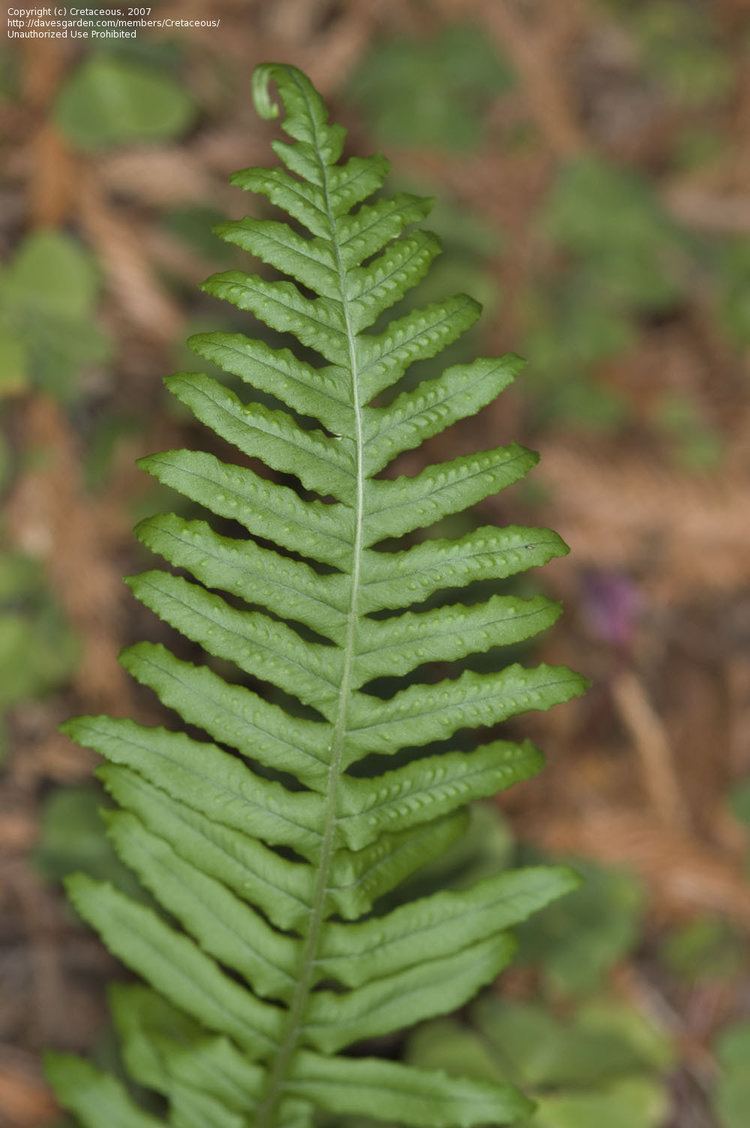
This species is a diploid, and is one parent of several species of hybrid origin:
Licorice fern polypodium glycyrrhiza dorris ranch springfield oregon
Cultivation
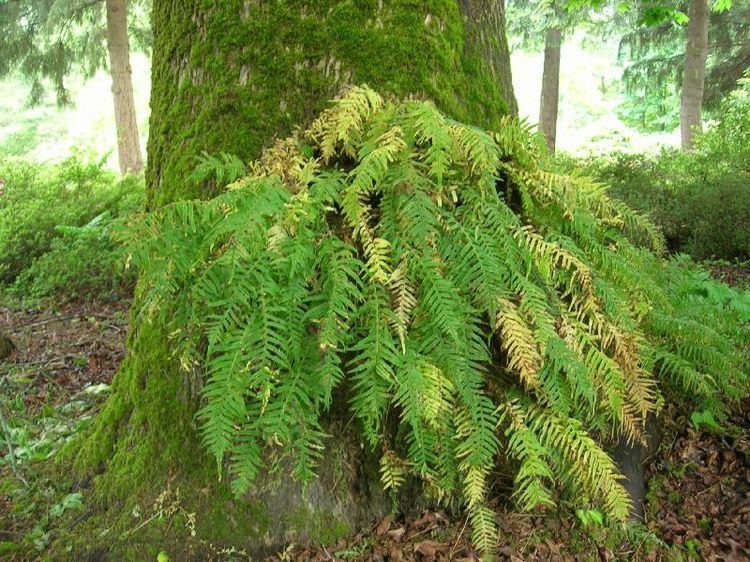
Licorice fern is in cultivation, the cultivar 'Longicaudatum' has gained the Royal Horticultural Society's Award of Garden Merit. It is not as rock-dependent as are many related species, the root-like creeping rhizome can be used to prepare a sweet tasting tea, or to flavour drinks.
